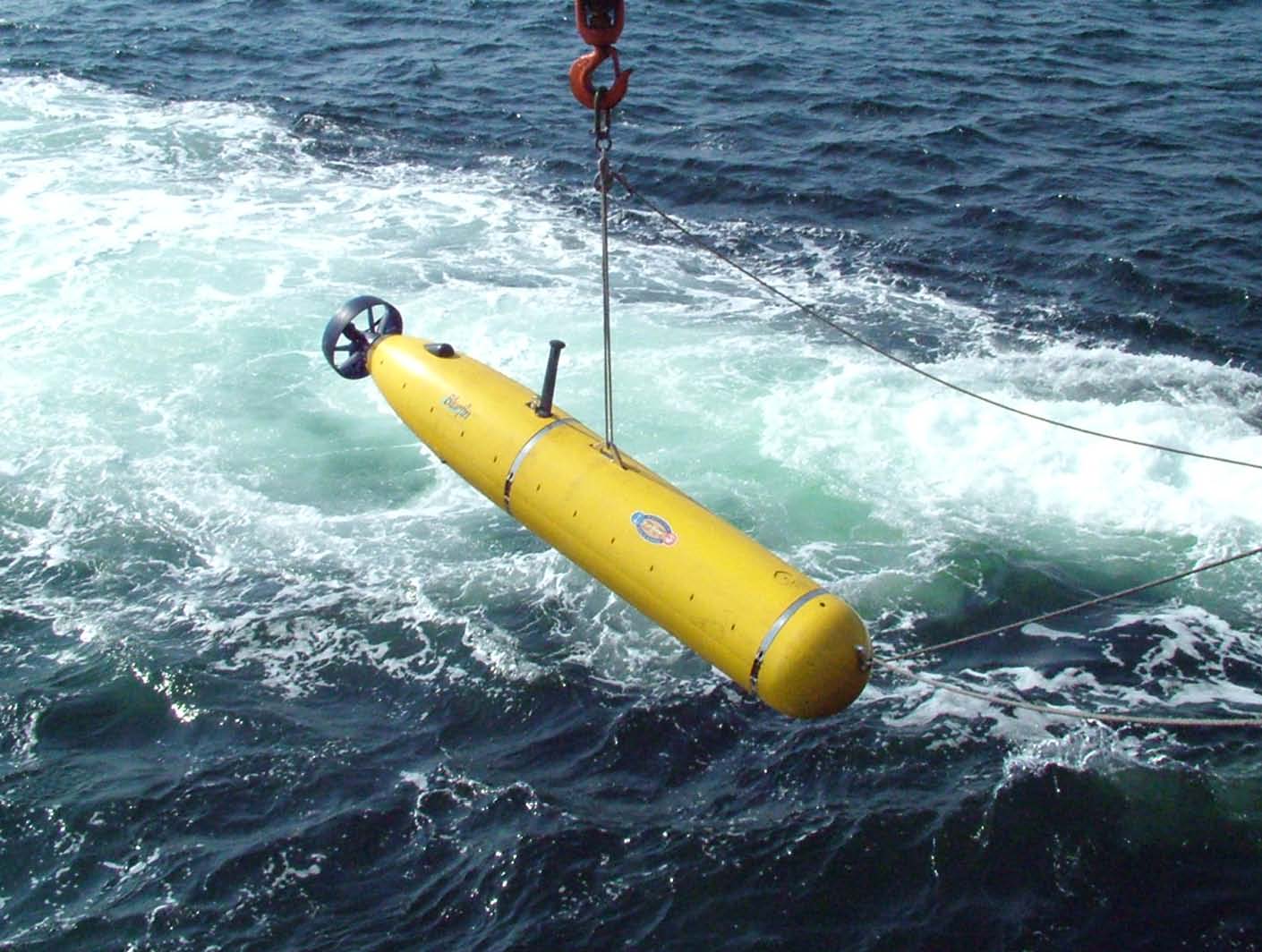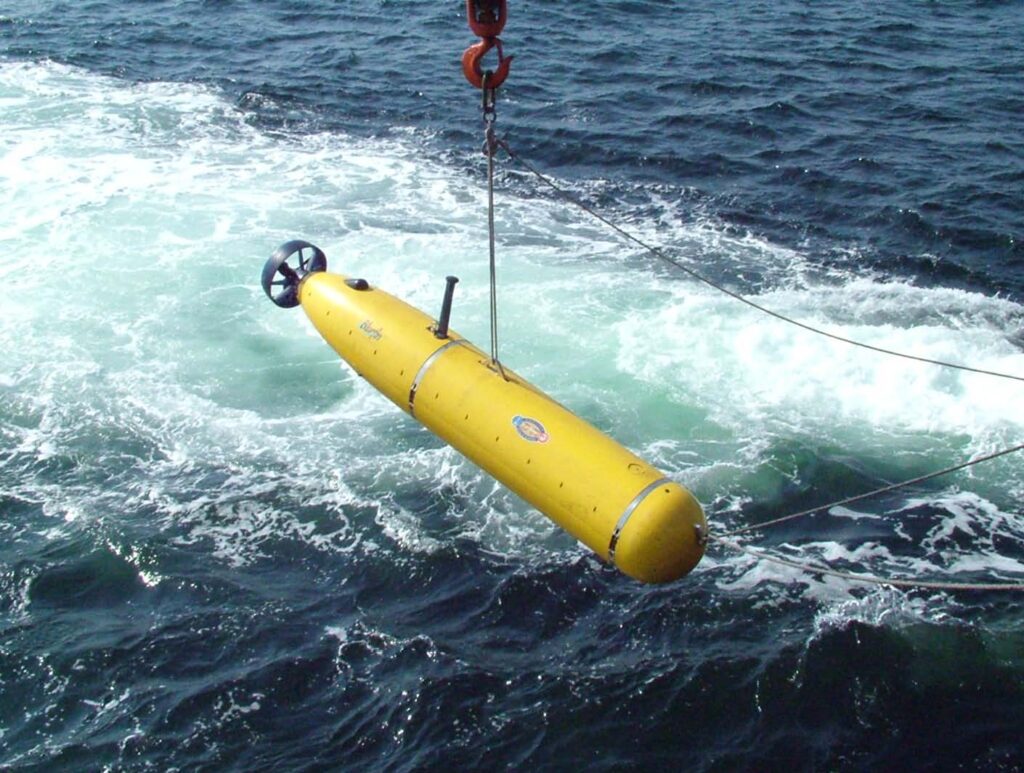
Introduction: AUVs Through the Ages
Let’s start a historical voyage tracing the evolution of Autonomous Underwater Vehicles (AUVs) aka Unmanned Underwater Vehicles (UUV). AUVs are pioneering robots which have discreetly revolutionized underwater exploration. Early conceptions in the latter half of the 20th century led to the sophisticated marvels of the 21st century. As with all new technology, the question of “What are AUVs used for?” has numerous answers and future potential.
Early Conceptions: Overcoming Underwater Limitations
In their infancy, autonomous underwater vehicles aimed to surpass the limitations of manned submersibles and remotely operated vehicles. The safety benefits of underwater robotics continue to spark curiosity about their potential applications in ocean studies.
The turn of the century marked a transformative phase in AUV history. Miniaturization, advanced battery technologies, and cutting-edge sensors propelled these silent explorers into uncharted territories. These advancements expanded their role beyond exploration to encompass real-time data collection in aquaculture, offshore energy, and marine science.
What is the History of AUVs
In 1957, Stan Murphy, Bob Francois, & later Terry Ewart developed the first AUV. The innovation occurred at the Applied Physics Laboratory, University of Washington. Named “Self-Propelled Underwater Research Vehicle” (SPURV), it studied diffusion, acoustic transmission, and submarine wakes.
A few years later, Massachusetts Institute of Technology developed early AUVs in the 1970s. Today, one is showcased in the Hart Nautical Gallery. Simultaneously, the Soviet Union was developing AUVs, though this was not widely known at the time.

AUVs emerged as cost-effective and risk-free alternatives for underwater search and exploration, prompting increased attempts for oceanic exploration and extraction programs. Researchers focus on AUVs for long-term data collection in oceanography and coastal management.
As these underwater robots have become more cost-efficient and accessible, they are utilized by a wide array of people and professions. In the commercial sector, AUVs are integral in the oil and gas industry, creating detailed seafloor maps before subsea infrastructure construction. Survey companies utilize AUVs for precise surveys where traditional methods are less effective, too costly, or inaccessible.
Significance to Research
In research, scientists deploy AUVs to study lakes, oceans, and the ocean floor. Various sensors, such as conductivity-temperature-depth sensors (CTDs) and fluorometers, measure elements, light absorption, and microscopic life. The University of South Florida’s Tavros02, a solar-powered AUV, exemplifies innovative research applications.
Groundbreaking examples
- The UofW Applied Physics Lab has iterated on its Seaglider AUV platform since the 1950s, attracting interest from the U.S. Navy and the oil and gas industry. Affordable manufacturing and operation costs make AUVs like the Seaglider suitable for diverse applications.
- The Crown-Of-Thorns Starfish Robot (COTSBot) by Queensland University of Technology demonstrates AUV interaction with its environment. It identifies and eradicates damaging starfish using a neural network and bile salts injection.
- Queensland University of Technology’s RangerBot AUV, a predecessor to COTSBot, monitors the Great Barrier Reef and reefs worldwide. Developed for single-person deployment, RangerBot features real-time on-board vision for navigation, obstacle detection, and management tasks.
Underwater Robots as Custodians of Aquatic Realms
Undoubtedly, the role of AUVs as aquatic custodians is useful in the applications of aquaculture. These underwater robots can provide real-time insights into water quality, temperature, and habitat conditions. This kind of precise monitoring Ensures optimal conditions for the health and growth of aquatic species. Unmanned undersea vehicles (UUV) offer innovative solutions in aquaculture. They offer a safe, reliable, cost-effective and precise method of monitoring a marine environment.
Offshore Energy: Unmanned undersea vehicles Redefining Inspection Dynamics
Offshore energy installations also find opportunity in the multifaceted capabilities of Unmanned undersea vehicles. Real-time inspections of subsea structures and pipelines streamline maintenance planning while safeguarding the integrity of offshore energy installations.
Marine Science: Unmanned Undersea Vehicles as Indispensable Research Allies
Additionally, marine scientists recognize AUVs as indispensable allies. The UUVs are equipped with advanced sensors to collect data on oceanography, marine biology, and geology. Robots are also useful in the operation of deep sea mapping, able to reach depths prohibitive to humans. UUVs offer unprecedented insights into the ocean’s depths and make AUVs essential in marine science research.

Beyond Exploration: AUVs at work with Photogrammetry for Infrastructure Inspection
As AUV technology continues to develop, we invite you to witness AUV evolution beyond traditional sensing. Now, Hover Capable UUVs can precisely navigate confined spaces, create detailed 3D models of the ocean floor, and assess submerged structures. Photogrammetry is the science and technology of obtaining reliable information about physical objects and the environment through the process of recording, measuring and interpreting photographic images and patterns of electromagnetic radiant imagery and other phenomena. AUVs answer the challenges of photogrammetry and infrastructure inspection and remove the risk of human error.
Conclusions on the Applications of AUVs
As we explore AUV history, “What are AUVs used for?” becomes a question which is continuously expanding. In the shadows of their silent revolution, AUVs continue to shape the future of underwater exploration and asset management, providing answers to this evolving question with each passing innovation. Conclusively, Underwater robots are not only a safer method than manually collecting data, but also more cost-effective and precise. PicSea is a pioneer in the world of autonomous underwater vehicles, and we invite you to stay tuned. Learn more about our exciting AUV products and remember, you never know where you’ll SEA us!
